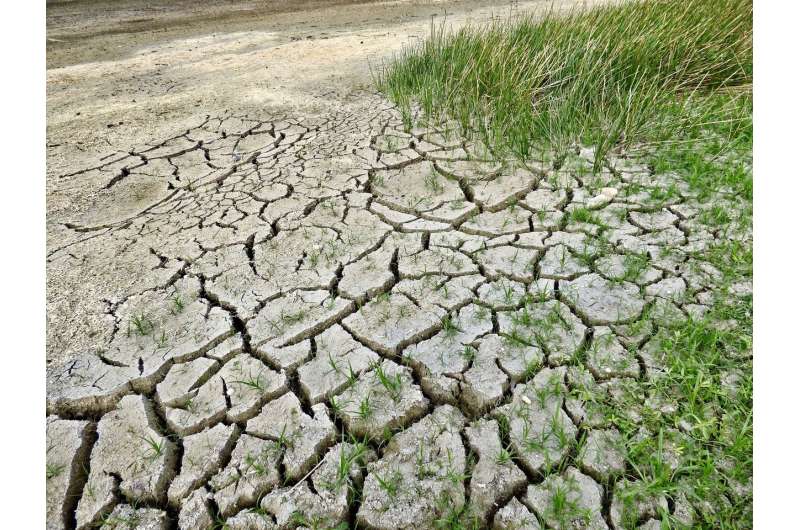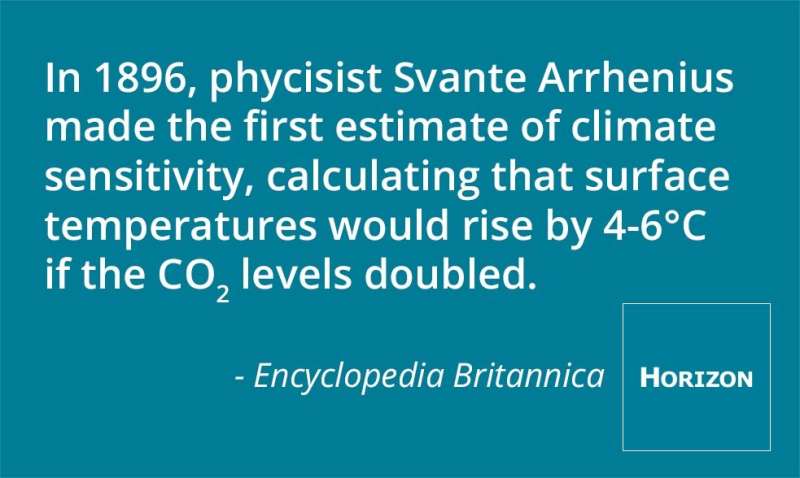Climate sensitivity—reducing the uncertainty of uncertainty

Global warming is a reality – but just how bad will it be? A study published in January 2018 claims to halve the uncertainty around how much our planet's temperature will change in response to rising carbon dioxide (CO2) levels, potentially giving governments more confidence to prepare for the future.
The results suggest that, when it comes to the climate, both the doom-mongers and optimists are wrong. On the other hand, they have prompted a heated debate over how certain you can be about uncertainty.
"People are quite rightly looking at what we've done, because we're claiming quite a big reduction in uncertainty, based on a pretty simple analysis," said lead author Professor Peter Cox of the University of Exeter in the UK.
The climate is a complex beast. To make predictions about how much temperatures will rise in the future, scientists employ hugely detailed computer simulations, which rely on swathes of experimental data as input.
But there is a big unknown in these simulations: how much warming do you get for a certain amount of CO2? This simple parameter is known as the climate's sensitivity, and it dominates our uncertainty about future global warming.
Normally, climate sensitivity is estimated by looking at historical data on temperature and greenhouse gases – either measurements of global warming or records of past climates, such as ice cores and tree rings. Given a rise in CO2 and a concurrent rise in temperature, scientists can judge how much the former affects the latter.
Big range
For the past 25 years or so, studies based on this method have led the Intergovernmental Panel on Climate Change (IPCC) to conclude that the sensitivity of the Earth to a doubling in CO2 falls in a 'likely' range of 1.5°C to 4.5°C, with a central estimate of 3°C.
Prof. Cox believes this degree of uncertainty isn't good enough. "I think it's slightly embarrassing that we've had a range that is so large for so long," he said.
According to Prof. Cox, it is difficult to reduce the uncertainty using conventional methods because the historical records aren't enough to work out how much heat has been put into the system by human activities. Although scientists know how much heat has been added by increasing CO2 levels, he says, they know rather less about the compensating cooling effects of aerosol particles – for instance sulphates, which are produced by volcanoes and the burning of fossil fuels.

To avoid this problem, Prof. Cox and colleagues ignore the historical warming trend altogether, and instead picture the climate as a spring. The length of the spring is the global temperature, and the weights on the end are the net heating due to CO2 and aerosols.
Crucially, to work out the sensitivity using this new method, Cox and his co-authors don't actually need to know how much weight there is. All they need to do is measure the spring's stiffness, and this is betrayed by how quickly the spring oscillates – or in real terms, how much temperatures have varied from year to year.
A 'stiff' climate equals a small sensitivity, while a 'slack' climate equals a big sensitivity. In their paper published in the journal Nature, Prof. Cox and colleagues estimate the sensitivity to be in the 'likely' range of 2.2°C to 3.4°C – less than half the range given by the IPCC.
Sensitive figures
To be clear, this range is not necessarily how much warming anyone should expect. It only reflects how much warming there would be for a doubling of CO2 levels since the baseline period of pre-industrialisation – although we're about halfway to that threshold already.
Nevertheless, the researchers' results appear to simultaneously exclude the very worst- and best-case scenarios. "I sort of see this as good news, in that our range says values above 4°C are unlikely, and so we're not yet too late to avoid the 2oC limit set by the Paris Agreement," said Prof. Cox.
But not everyone is on board with the new statistics. Climate scientist Professor Tapio Schneider of Caltech in California, US, believes the researchers have mistakenly assumed that their springy relationship is linear, when it could be more complicated.
This view is not shared by Dr. James Annan of Blue Skies Research in the UK. On his blog he describes himself as a 'fan' of the new approach, albeit 'not uncritically."
Professor Reto Knutti of ETH Zürich in Switzerland points out that Prof. Cox and colleagues are not the first to try an alternative method to cut the uncertainty surrounding climate sensitivity, and 'it's not obvious why theirs should be much better than others."
"So while I do find those emergent constraints promising, and I hope we will be able to narrow the range eventually, there is a danger of finding spurious and not robust correlations – the result being that error bars are too small," he added.
Prof. Cox admits that his group's results will probably not be the last word, but he is hopeful that they can move the science of climate uncertainty forwards, beyond the IPCC range. "I think there's good reason to believe climate scientists are now ready to reduce the long-standing uncertainty in ECS (equilibrium climate sensitivity). It is high-time that we did that," he said.
Provided by Horizon: The EU Research & Innovation Magazine


















